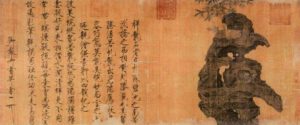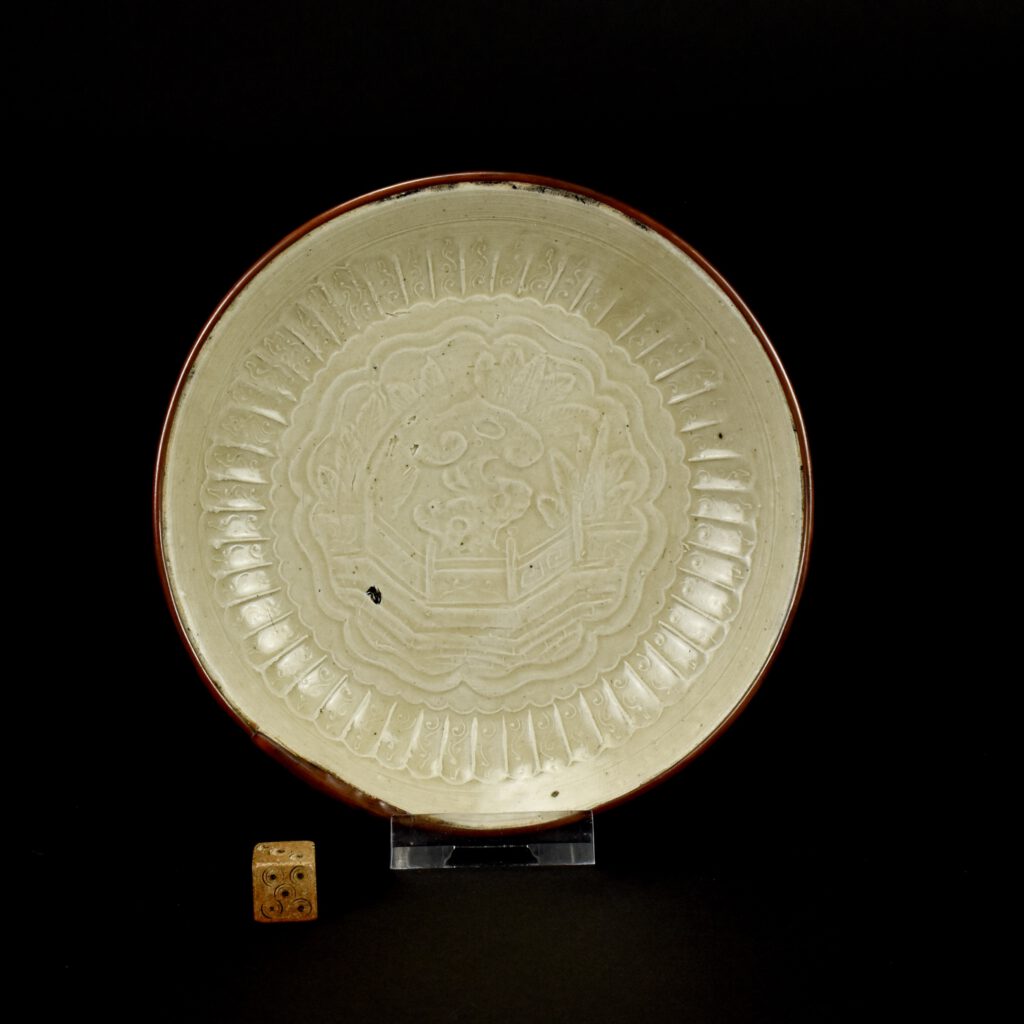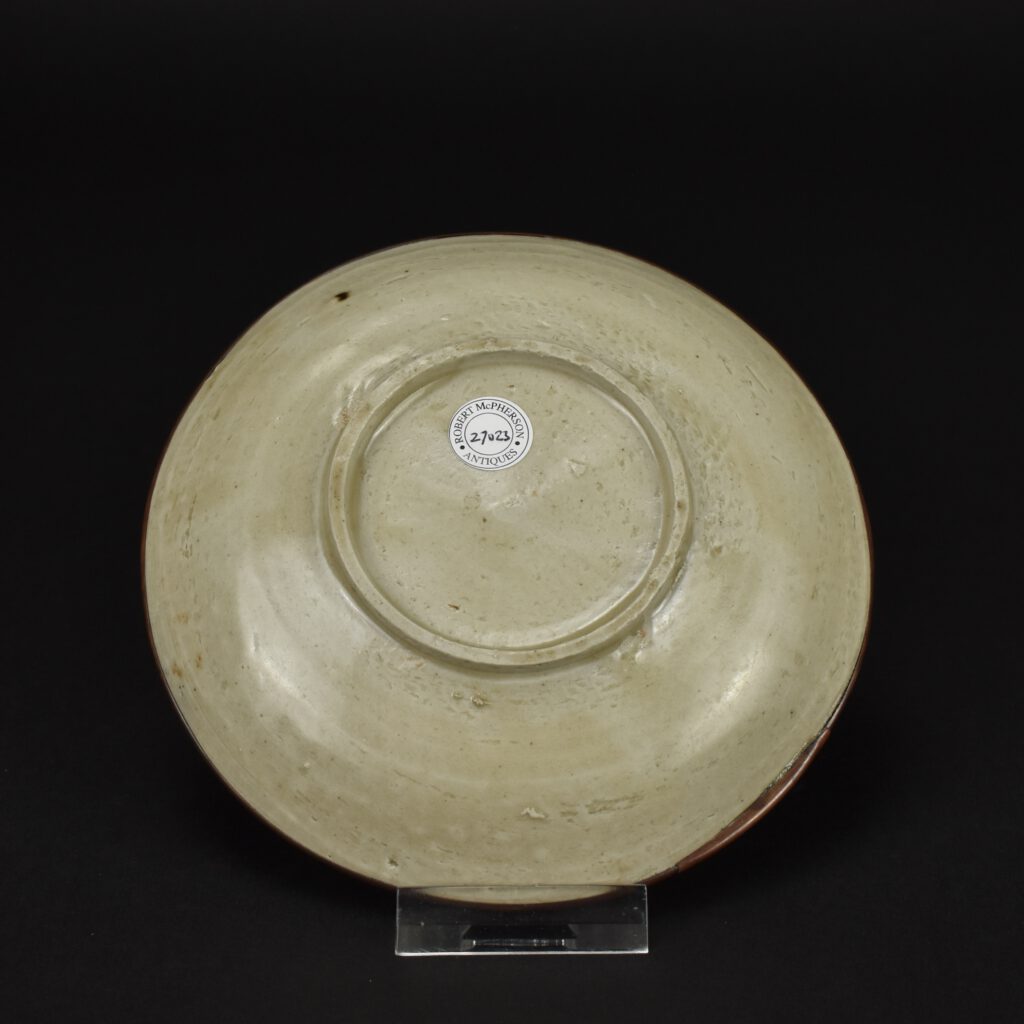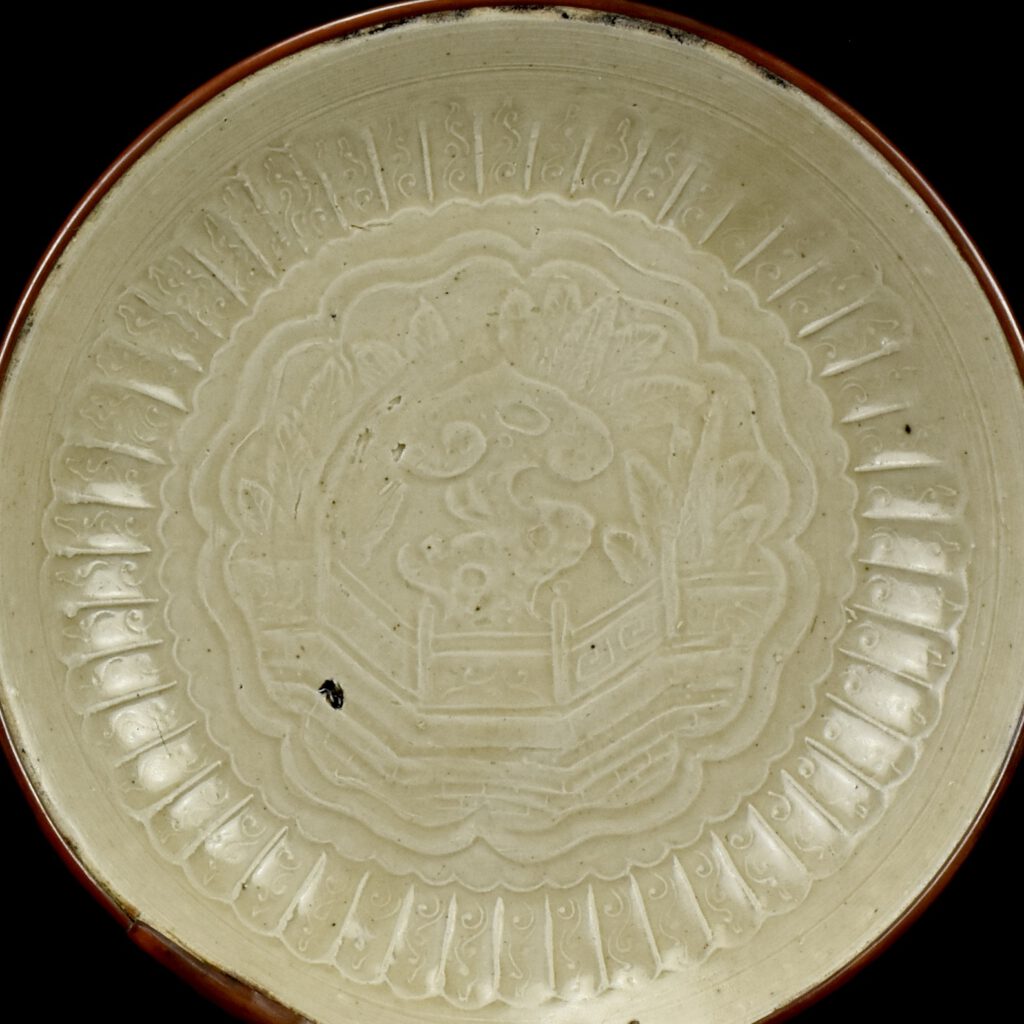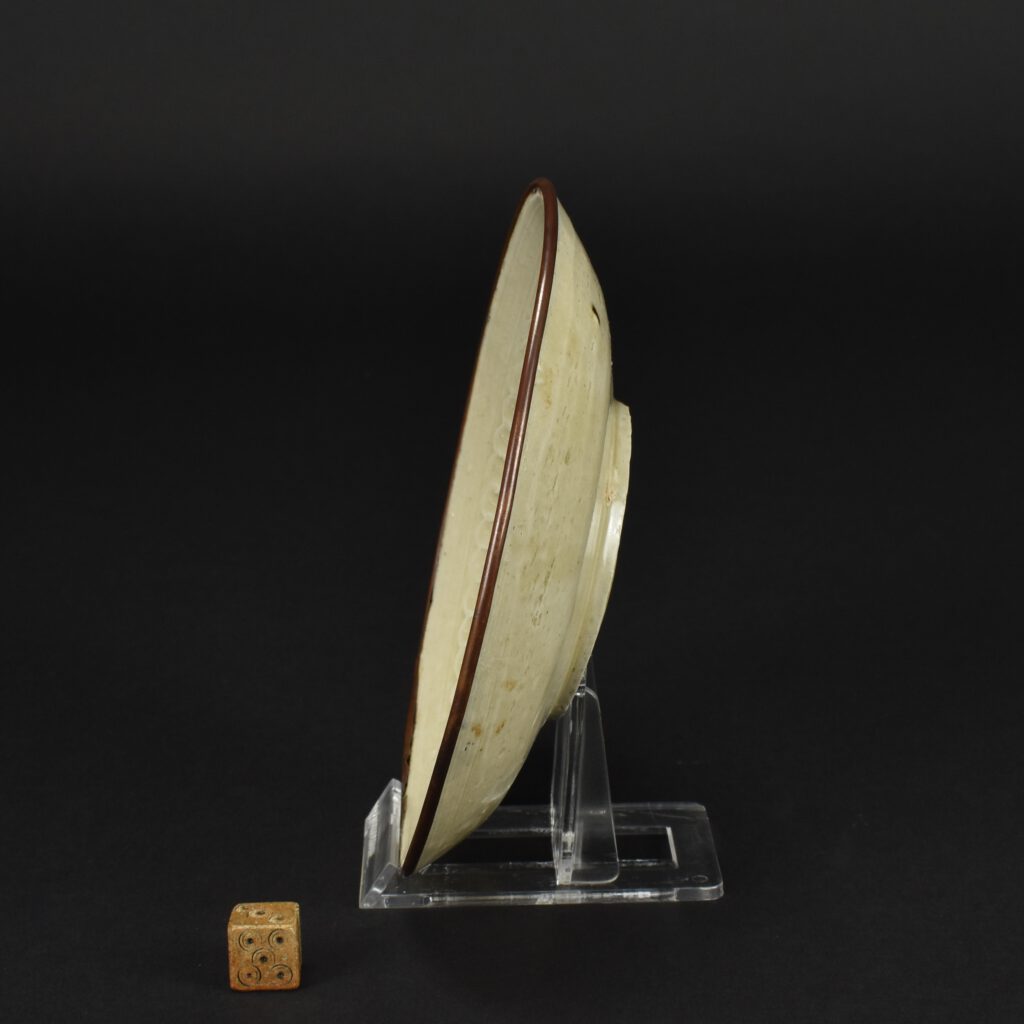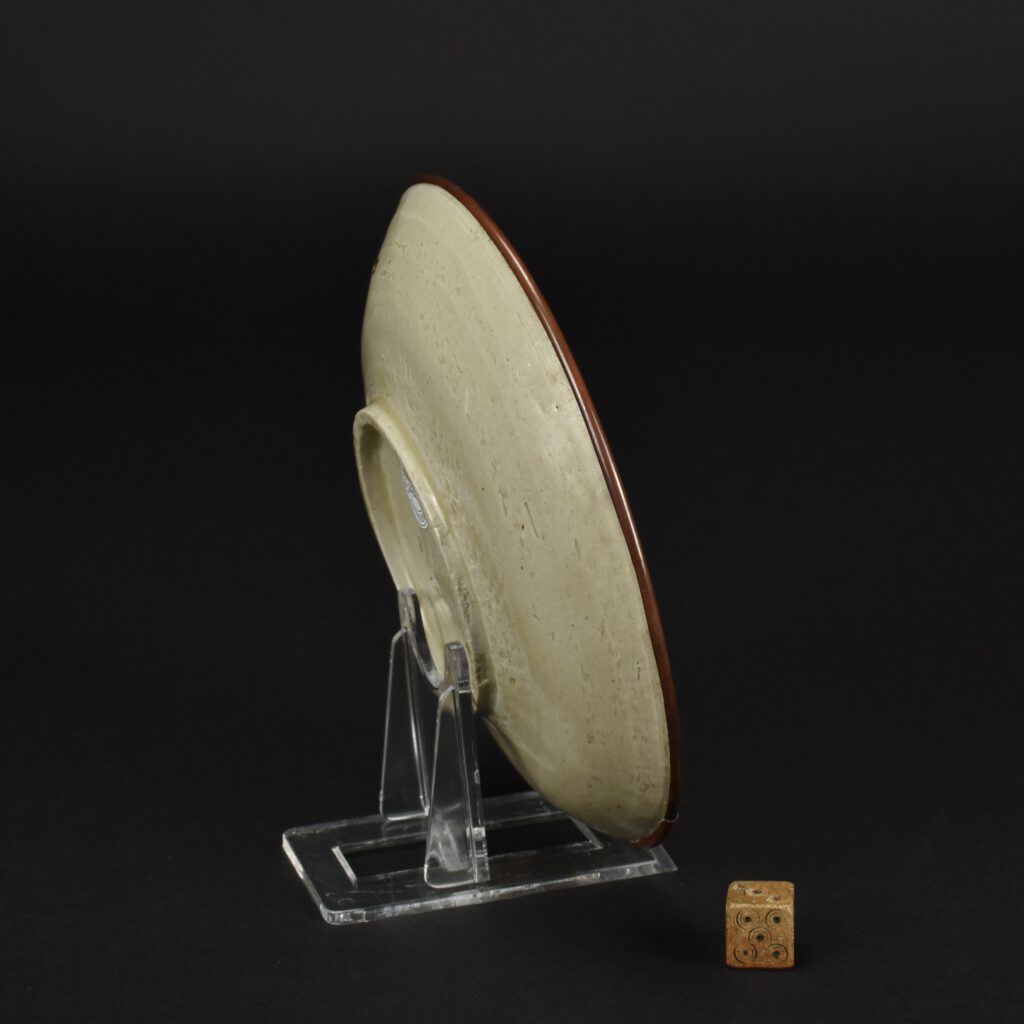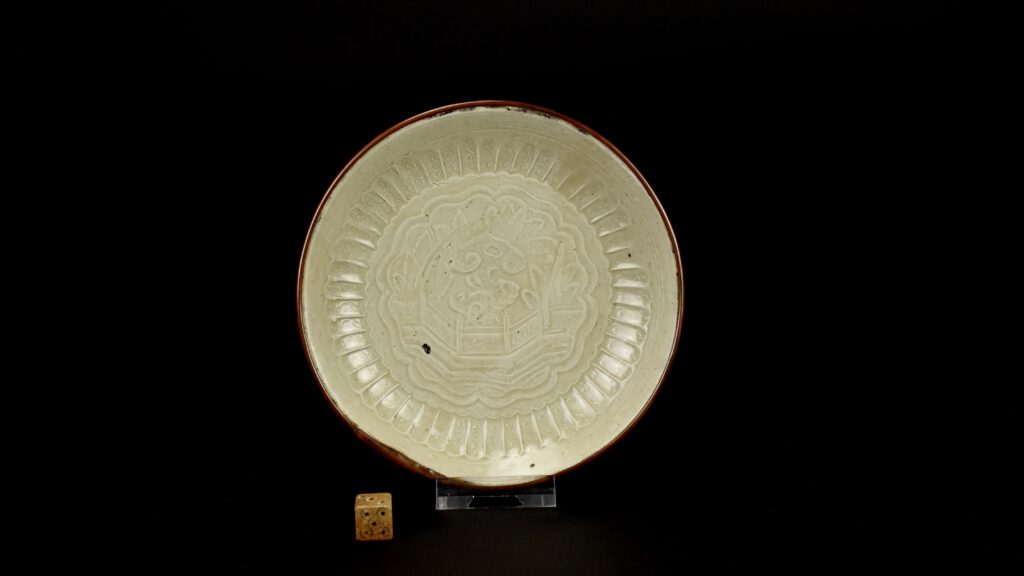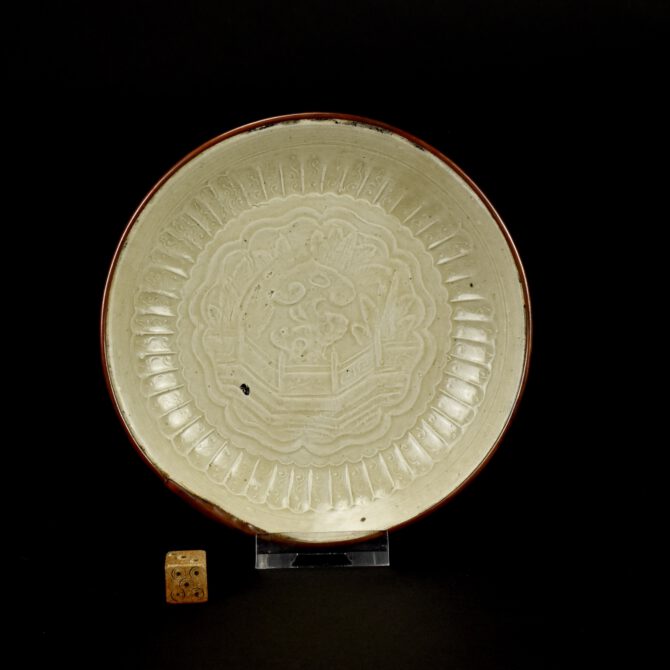
A Song or Jin Ding Ware Dish
A Ding Ware Dish, Ding Kilns, Hebei Province, Song or Jin c.1050–1234. This Dingyao (Dingware) Pan is crisply moulded and covered with a thin creamy glaze with a feint olive tint. The central design of this circular Ding dish is of an upright ornamental Ruyi shaped rock of the type found at Lake Taihu. These decorative irregularly shaped rocks were called, Gongshi. The naturally occurring rocks are referred to as Scholars’ Rocks or Viewing Stones, small ones were mounted and used in scholars studios. The large ones were moved and carefully placed as focal points in a garden. The present example is shown with a balustrade fence, behind and to either side are lush banana plants. The scalloped foliate moulded cavetto is decorated with fine scrolling stylised plants. The dish would have been fired on the rim, as it is the only unglazed part of the dish that has been wiped clean of glaze. The rim has a metal band to protect it as well as to hide the unglazed rough edge. The back is unevenly glazed with chatter marks showing. Ding wares come from a region of northern China formerly known as Dingzhou (Ding prefecture); the white porcelains made there have been prized since the Song dynasty (960–1279). Archaeologists have found the main Ding kiln complex on the border of present-day Quyang in Hebei province.
See Below For More Photographs and References.
SOLD
- Condition
- An added section of copper alloy (probably bronze) has been wrapped over the the thinner band to hide a shallow but long chip. This is only just visible from the front. There is a very small glaze-crack (only visible on the front). There is a piece of dark kiln grit to the front.
- Size
- Diameter 13.3 cm (5 1/2 inches)
- Provenance
- N/A
- Stock number
- 27023
- References
- A dish from the Percival David Foundation at the British Museum with similar elements is described on the BM website : "Ding ware定窯 Quyang county, Hebei province河北省,曲陽縣 Northern Song or Jin dynasty, about AD 1050–1234". A similar Dingyao dish dated to the 13th century, depicting a scholars' rock is in the Los Angeles County Museum of Art (Gift of Nasli M. Heeramaneck M.73.48.106.).
Information
Ding Ware :
Production of Ding ware began late in the Tang dynasty in Quyang county, Hebei province and was closely associated with Xing ware. During the Five Dynasties (906-960) Ding ware developed into its own distinct style and by the Northern Song dynasty the Ding kilns were producing some of the most successful porcelains in China. Ding ware is characterized by its ivory coloured body, clear honey-brown glaze, copper bound rim, and “tear drops” which run down the outside of its wares.
Decoration of Northern Song Ding ware was typified by elegant hand carved and incised designs with combed detailing; this contrasts with Southern Song Ding ware which tended to display densely moulded motifs. Due to Ding’s popularity many kilns produced their own version of the wares which are termed Ding-type wares; however, these wares differ in refinement of body and craftsmanship to those produced at the Ding kilns.
The most characteristic wares are thin porcelains with a white or greyish body and a nearly transparent white-tinted though they are classed had been described as stoneware by some people in the past. Chemical analysis has shown that they were often made entirely of a Kaolintic clay without any petuntse or "porcelain stone".They are mostly decorated with uncoloured designs that are incised or in very shallow relief.
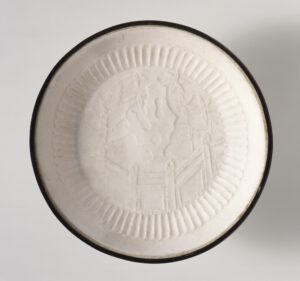
Scholars Rocks :
Chinese scholars` rocks, also known as scholar stones or viewing stones, are small shaped or naturally-occurring rocks appreciated by Chinese scholars from the Song dynasty onwards, and quite frequently found in traditional Chinese gardens.
The most highly regarded stones are lingbi rocks, from Lingbi County of Anhui Province, with the finest examples dating from the Ming dynasty and Song dynasty.
Taihu rocks are also prized, and are commonly used as garden stones. They influenced the development of Korean stone art and Japanese suiseki aesthetics and styles and were an important part of Confucian art. Natural stone and rock formations, with no artificial carvings, are preferred. Rocks would sometimes be carved and then thrown back into a lake so that any markings could be washed away. Scholars rocks can be any colour, and contrasting colours are not uncommon. Sometimes they feature painted patterns, which can be of any subject, either natural or abstract. The size of the stone can also be quite varied: scholars rocks can weigh either hundreds of pounds or less that one pound. Subtlety of colour, shape, and markings is also desired, as is beauty of texture and shape. Scholars stones are usually reminiscent of someone or something, or it may convey a spiritual nature that moves viewers in some way. They are usually set upon a stable surface, such as a rosewood pedestal that has been carved specifically for the stone.
